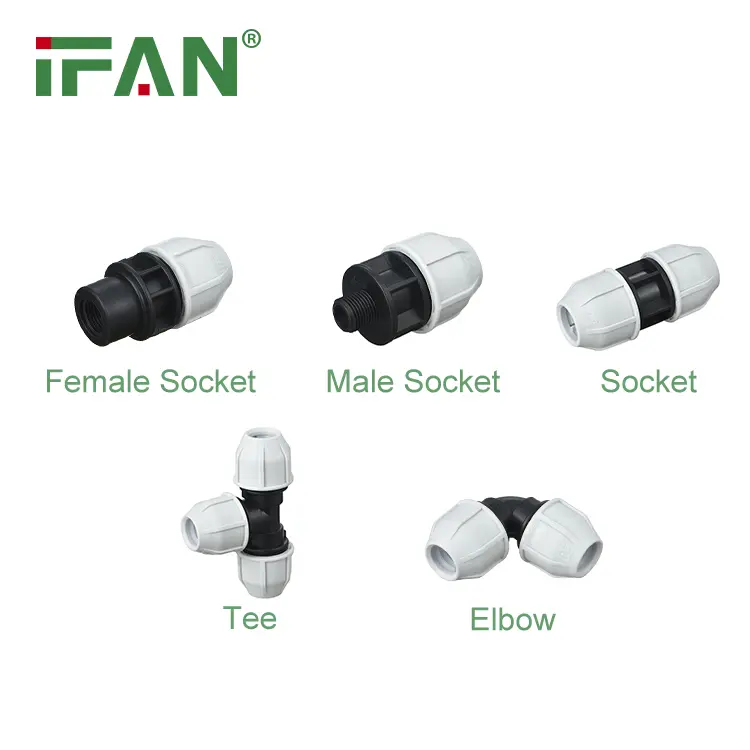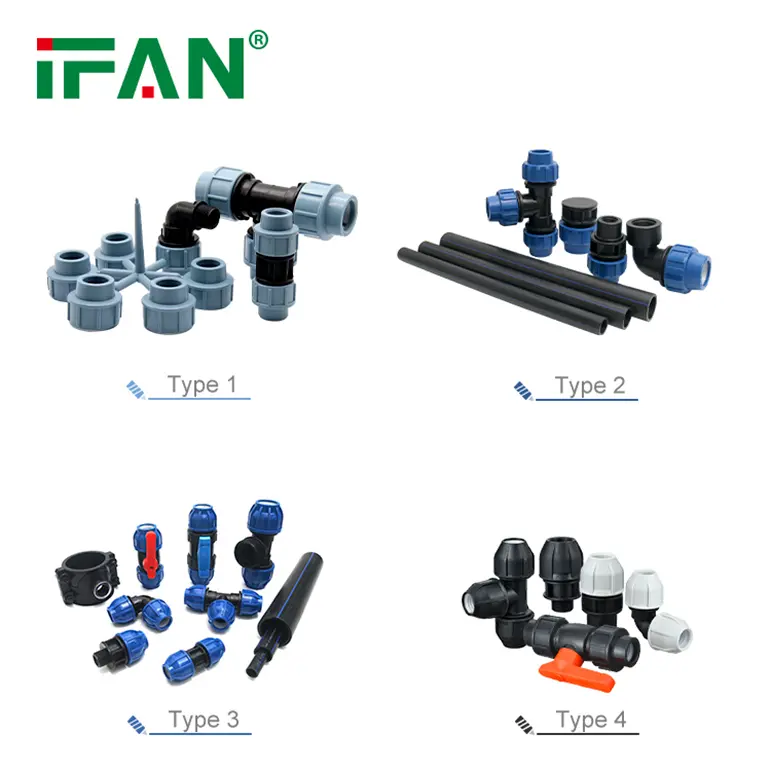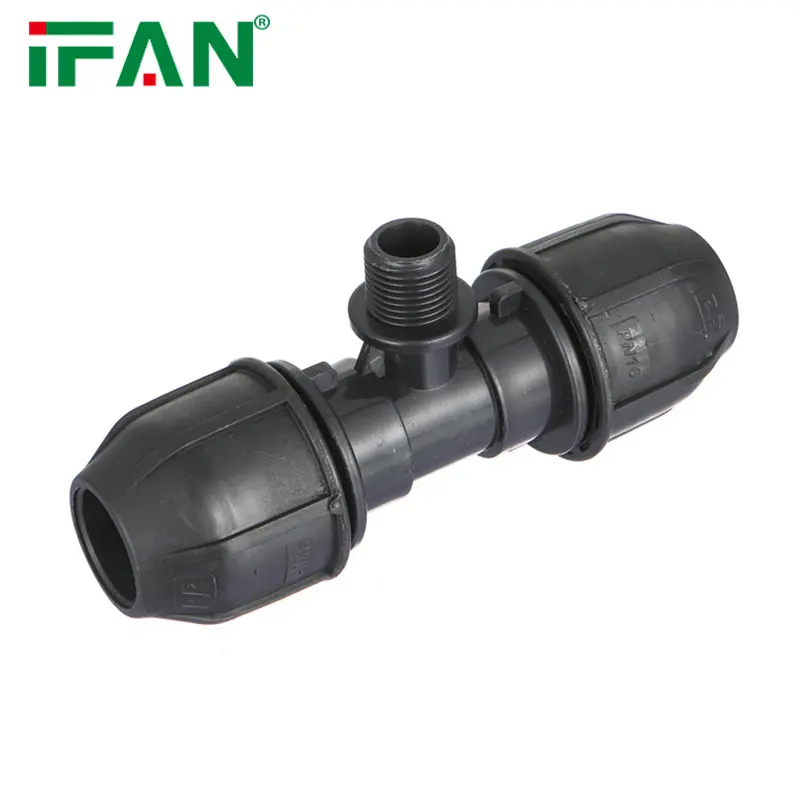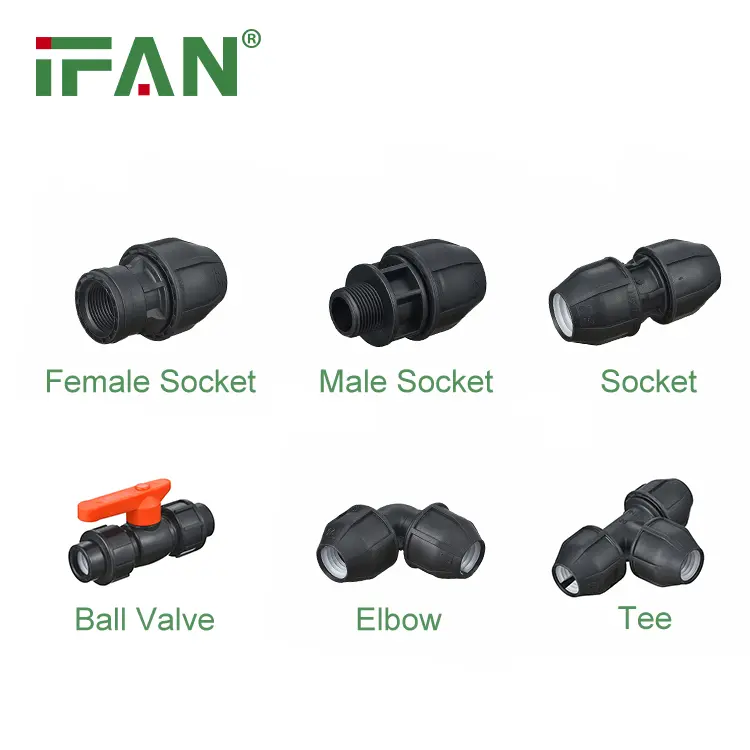Polypropylene (PP) fittings are essential components in various piping systems, renowned for their durability and resistance to wear. Wear resistance is a critical property, particularly in applications involving abrasive substances or high flow rates. This article explores the wear resistance of PP fittings, providing a comprehensive overview of their performance and benefits.
Material Properties of Polypropylene
Polypropylene is a thermoplastic polymer known for its excellent mechanical properties. It is resistant to impact, fatigue, and chemical corrosion, which contributes to its wear resistance. The molecular structure of polypropylene includes long-chain molecules that provide flexibility and strength, making it less prone to wear and tear compared to other materials.
Mechanisms of Wear Resistance
Wear resistance in PP fittings is achieved through several mechanisms. First, polypropylene’s molecular structure allows it to absorb and dissipate energy effectively, reducing the impact of abrasive forces. Second, the material’s low friction coefficient minimizes surface wear, as there is less friction between moving parts. Third, polypropylene’s smooth surface finish further reduces abrasion and enhances the lifespan of the fittings.
Comparison with Other Materials
When compared to metals like steel or aluminum, PP fittings offer superior wear resistance in certain applications. Metals can suffer from rapid degradation due to corrosion and erosion. In contrast, polypropylene is inherently resistant to chemical attacks, making it ideal for applications involving corrosive substances. For example, in chemical processing plants, PP fittings endure wear better than metal fittings.
Applications in High-Abrasion Environments
PP fittings are particularly advantageous in high-abrasion environments. For instance, in agricultural irrigation systems, where the movement of soil particles can be abrasive, PP fittings maintain their integrity better than many alternatives. Similarly, in mining operations, where abrasive materials are transported through pipes, PP fittings withstand wear more effectively, reducing maintenance needs and downtime.
Case Study: Industrial Applications
Consider a chemical manufacturing plant that uses PP fittings in its piping system. These fittings handle various corrosive chemicals and high flow rates. Due to the wear-resistant properties of polypropylene, the fittings experience less degradation compared to metal alternatives. This results in fewer replacements and lower maintenance costs over time.
Impact of Flow Rates on Wear
High flow rates can increase the potential for wear in any piping system. However, PP fittings are designed to handle substantial flow rates while maintaining their wear resistance. The smooth interior surface of them minimizes turbulence and reduces the impact of high-speed fluids, thus enhancing their durability in dynamic environments.
Benefits of Wear Resistance in PP Fittings
The wear resistance of them provides several benefits. It extends the lifespan of the fittings, reducing the frequency of replacements and maintenance. This results in cost savings and operational efficiency. Additionally, the reduced need for replacements decreases downtime and interruptions in various industrial processes.
Longevity and Maintenance
PP fittings, due to their wear-resistant nature, have a longer service life compared to many other materials. This longevity translates into less frequent maintenance and fewer system interruptions. In industries where continuous operation is crucial, the durability of them ensures smooth and efficient performance over time.
IFAN International Standard for HDPE Tubing
FAN (Federal Agency of Norms) recognizes several critical standards for HDPE pipes, including ASTM D3035, ASTM D3350, ISO 4427, EN 12201, DIN 8074/8075, GB/T 13663, AS/NZS 4130, JIS K6760, BS 6572, and CSA B137.1, to ensure uniform quality and performance globally.
Conclusion
In summary, the wear resistance of them is a key factor that contributes to their widespread use in various industries. The inherent properties of polypropylene, including its impact absorption, low friction coefficient, and smooth surface finish, make it highly effective in resisting wear. Compared to metals and other materials, PP fittings offer superior performance in high-abrasion and corrosive environments. Their durability, cost-effectiveness, and minimal maintenance requirements make them an excellent choice for many applications.
If you have read this article and have any questions, please feel free to contact IFAN. Below is our contact information:
Whatsapp:+86 13373827623
Email:[email protected]
























































